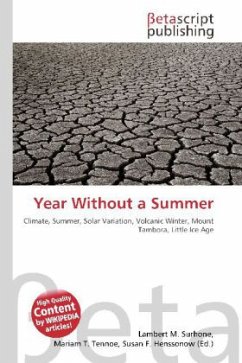
Year Without a Summer
Versandkostenfrei!
Versandfertig in 6-10 Tagen
23,99 €
inkl. MwSt.

PAYBACK Punkte
12 °P sammeln!
Please note that the content of this book primarily consists of articles available from Wikipedia or other free sources online. The Year Without a Summer was 1816, in which severe summer climate abnormalities destroyed crops in Northern Europe, the Northeastern United States and eastern Canada. Historian John D. Post has called this "the last great subsistence crisis in the Western world". Most consider the climate anomaly to have been caused by a combination of a historic low in solar activity and a volcanic winter event; the latter caused by a succession of major volcanic eruptions capped of...
Please note that the content of this book primarily consists of articles available from Wikipedia or other free sources online. The Year Without a Summer was 1816, in which severe summer climate abnormalities destroyed crops in Northern Europe, the Northeastern United States and eastern Canada. Historian John D. Post has called this "the last great subsistence crisis in the Western world". Most consider the climate anomaly to have been caused by a combination of a historic low in solar activity and a volcanic winter event; the latter caused by a succession of major volcanic eruptions capped off by the Mount Tambora eruption of 1815, the largest known eruption in over 1,600 years. The unusual climatic aberrations of 1816 had the greatest effect on the Northeastern United States, the Canadian Maritimes, Newfoundland, and Northern Europe.












